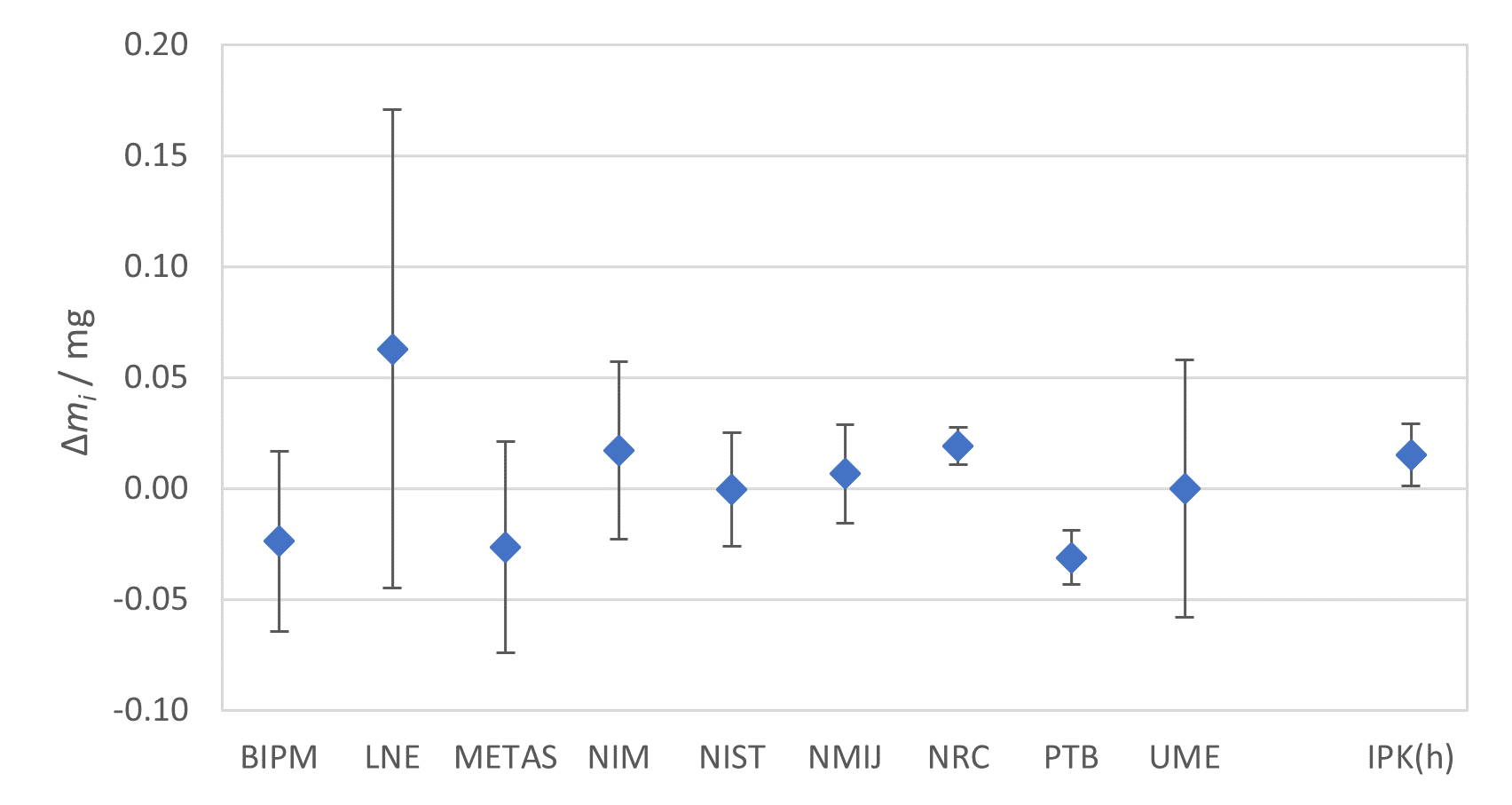Completion of the second key comparison of kilogram realizations
From September 2021 to January 2023, the BIPM organized the second CCM key comparison of realizations of the kilogram definition based on the fixed numerical value of the Planck constant, which came into force on 20 May 2019. The objective was to determine the level of agreement between realizations of the kilogram using Kibble and joule balances and the X-ray crystal density (XRCD) method and to provide input for the calculation of the second Consensus Value of the kilogram. The Consensus Value serves as the basis for an internationally coordinated dissemination of the kilogram and is updated after each new key comparison. Its use will continue until satisfactory agreement between realization experiments has been achieved.
The comparison, organized by the BIPM, included nine participants:
- BIPM, France (LNE), Switzerland (METAS), USA (NIST), Canada (NRC) and Türkiye (UME) operating Kibble balances,
- China (NIM) using a joule balance,
- Japan (NMIJ) and Germany (PTB) using 28Si spheres the masses of which had been determined using the XRCD method.
These techniques were used to calibrate
The results of the weighings performed at the BIPM headquarters together with the measurement results communicated by the participants allowed comparison of the values attributed to 1 kg mass standards using the realization experiments of the participants (as depicted in the figure). The final report is available in Metrologia.
-
Final report on the CCM key comparison of kilogram realizations
CCM.M-K8.2021 Metrologia (2023) 60 07003
Michael Stock et al.
The key comparison reference value (KCRV) was calculated as the weighted mean of the results. It has a deviation of
The BIPM Kibble balance participated in this comparison, with a deviation from the KCRV well within its standard uncertainty of

Differences between mass values attributed to